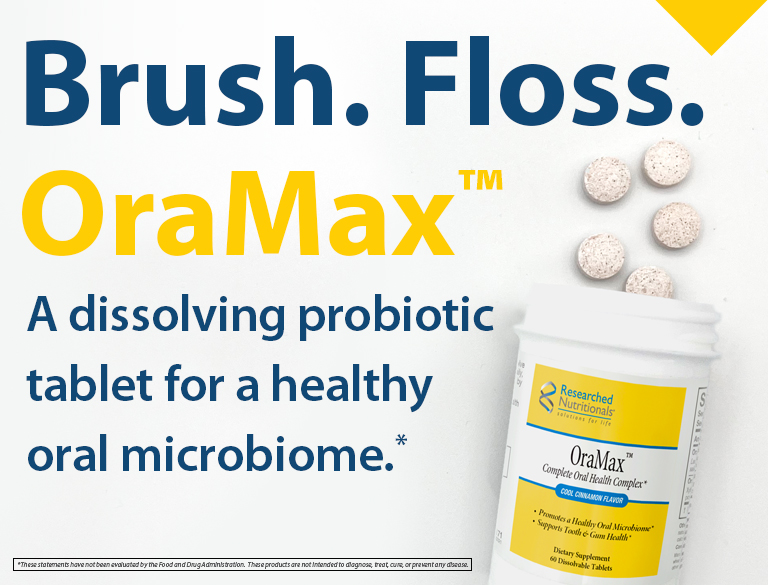By Dr. Douglas Lobay, BSc., ND
Improving kidney function can be difficult and exasperating. As a practicing naturopathic physician, I am always interested in improving the health of my patients. True to the tenets of do no harm, treat the whole patient, and stress preventative medicine, I am looking for ways to improve kidney function in my patients. I have become particularly interested in variations of creatinine and glomerular filtration rate and declining levels of function at the stage 2 and stage 3 kidney disease. I have been fortunate to practice chelation therapy, and I have monitored kidney function in hundreds of patients. Over the years I have analyzed many blood chemistry panels and performed countless urinalyses in the office. I have evaluated kidney function based on serum creatinine levels and estimated glomerular filtration rate (eGFR). Through continuity of care I have compared lab values over time for many patients and tried to figure out what improves kidney function and what causes its decline. Like the canary in the coal that is sent down into mine shafts to sniff out toxins before the miners are sent in, finding ways to improve kidney function before irreversible kidney damage occurs can be indemnifying.
I found Dr. Jenna C. Henderson’s article in the June 2019 Townsend Letter, titled “Is This Actually Kidney Disease, and What Can Be Done About It?” Here is a summary of important points that I learned from this article. Glomerular filtration rate (GFR) is an estimate of kidney filtration. It is associated with serum creatinine levels and also age, gender, and race. It is underestimated in the very young and the very old. If eGFR is decreased, then the first question to be asked is how well hydrated is the patient? Then the next question to be asked is does the patient have high blood pressure or hypertension? Serum creatinine levels can be increased with an increase in muscle mass. Blood urea nitrogen of BUN is a nitrogenous waste product that correlates with dietary protein intake. Renal anemia is due to decreased erythropoietin levels. Potassium levels may be increased with a decreased eGFR. The normal level of urinary pH is between 5.5 and 6.5. There are approximately one million nephrons in the kidneys of the adult human. You lose about 1% of nephrons per year with aging. Blood tests can detect serum creatinine levels, which can be used to estimate glomerular filtration rate. An increase in serum creatinine is associated with a decrease in GFR. Hyperfiltration of the glomerulus is associated with chronic kidney disease. Recovery from a decreased GFR and chronic kidney disease can be limited due to fibrosis of kidney tissue. Active cell division can promote kidney recovery.
Dr. Henderson further describes kidney supplements that may be beneficial for urinary tract infections or UTI’s, kidney stones, and chronic kidney disease. She likes animal studies that use the 5/6 nephrectomy model, in which 5/6 of the kidney is removed. The effect of a treatment can be measured in the remaining 1/6 of the functioning kidney. Dr. Henderson describes the kidney friendly diet. She also suggests the use of dietary supplements that have been shown in some studies to improve kidney function. Some of the supplements mentioned in this article include Epimedium sagittatum, resveratrol, hibiscus, Salvia miltiorrhiza, ubiquinol, citrus bioflavonoids, curcumin (especially tetrahydrocurcumin), and medicinal mushrooms like cordyceps. These supplements can help to ameliorate oxidative stress, inflammation, proteinuria and progressive renal damage.
I am not a kidney specialist, but I have an extraordinary appreciation of the nurses and doctors who work in kidney dialysis units. However, I am interested in how to improve kidney function in early kidney decline such as with stage 2 and 3 kidney disease on an outpatient basis. Stage 2 kidney disease is defined as an eGFR between 60 to 89 milliliters per minute, and stage 3 kidney disease is defined as an eGFR between 30 and 59 milliliters per minute. I decided to do a literature search on PubMed about natural ways to improve kidney function. I discovered that a good place to begin in understanding kidney disease is a thorough review of basic renal physiology.
Kidney Physiology Review
The kidneys are a pair of bean-shaped organs that are normally found in the right and left of retroperitoneal space in the abdomen. The average size of the right kidney is 10.9 centimeters in length and 11.2 centimeters for the left kidney. The average female kidney weighs 115 to 155 grams while the average male kidney weights 125 to 175 grams. Each kidney is supplied by one renal artery and one renal vein. The main function of the kidney is to filter the blood, maintain serum osmolarity, maintain electrolyte and acid/based balance, and remove toxins from the blood. The four mechanisms by which the kidneys work are filtration, re-absorption, secretion and excretion.
The functional unit of the kidney is the nephron. Each kidney has about one million nephrons. Hydrogen, ammonia, potassium, and uric acid are excreted from the nephrons; and water, sodium, bicarbonate, glucose, and amino acids are reabsorbed. Vitamin D or calcitriol is produced in the kidney, and hormones erythropoietin and rennin are also produced there. Each kidney is divided into an outer cortex and an inner medulla. Nephrons, primarily the glomeruli are located in the renal cortex. The afferent arteriole supplying prerenal blood enters the bulbous capsule of the nephron called Bowman’s capsule. The conglomeration of afferent arterioles inside Bowman’s capsule is called the glomerulus. The increased hydrostatic pressure of the afferent arteriole forces blood at high pressure into the glomerulus. Due to the hydrostatic pressure and membrane permeability, low weight molecular molecules are filtered across the capsular membrane. The blood is also filtered across endothelial cells of the arteriole, the basement membrane, podocytes, and around mesangial cells. An amazing one-fifth of the entire human blood supply is filtered each minute. An incredible amount of 180 liters of filtrate is produced each day through the renal glomerulus. The efferent arteriole leaves Bowman’s capsule with the remaining filtered blood. Meanwhile, the filtrate produced across the glomerulus drains down across a series of tubules, namely the descending proximal tubules, loop of Henle, the ascending tubules and the distal convoluted tubules and collecting ducts. The early proximal tubule reabsorbs glucose, amino acids, sodium, chloride, phosphate and water. The loop of Henle is a u-shaped bend of tubules that includes the thin descending loop and a thicker ascending loop. The thin descending loop of Henle reabsorbs mainly water that leads to concentration of urine produced. The thick ascending loop of Henle reabsorbs electrolytes including mainly sodium, potassium chloride, magnesium, and calcium. The distal convoluted tubules reabsorb mainly sodium and chloride and the collecting ducts also reabsorb sodium and water. The urine filtrate produced leaves the collecting tubules through the renal medulla and ultimately through the calyces to the ureters and bladder.
Creatinine is a breakdown product of creatine phosphate found in muscles and is usually produced at a fairly constant rate and is somewhat dependent on muscle mass. About 1% to 2% of muscle creatine is converted to creatinine on a daily basis. It is a nitrogenous compound removed by the body primarily through glomerular filtration and a small amount through the proximal tubules. Men, through increased muscle mass, have higher creatinine levels than females. Serum creatinine levels are 0.5 to 1.0 milligrams/deciliter or 45 to 90 micromoles/liter in females and 0.7 to 1.2 milligrams/deciliter or 60 to 110 micromoles/liter in males. Lab values of creatinine also vary slightly from lab to lab. Creatinine has also demonstrated antibacterial and immunosuppressive properties. Creatinine levels can also be increased with high protein dietary consumption. Creatine clearance is associated with glomerular filtration rate. False elevations in serum creatinine can occur. Factors that can increase serum creatinine include race, age, body size, gender, menstruation, diurnal variation, intense exercise, and increased protein intake. Approximately 15% of creatinine is secreted by the renal tubules. Certain drugs can increase serum creatinine. These drugs include Trimethoprim, cimetidine, and H2 blockers. Rhadmyolysis or acute muscle damage can also increase creatinine levels.
Urea is a nitrogenous by byproduct of muscle metabolism produced in the urea cycle by conversion of nitrogen from amino acids to ammonia compounds. BUN production is somewhat more variable than creatinine and less reliable as an indicator of kidney filtration. Urea is increased from a diet rich in protein. The BUN to creatinine ratio provides some interesting information about the possible location of kidney dysfunction. A BUN to creatinine ratio greater than 20:1 indicates a prerenal cause. A BUN to creatinine ration between 10-20:1 indicates a post-renal cause. And a BUN to creatinine ratio of less than 10:1 indicates an intra-renal cause.
Glomerular filtration is an estimate of kidney function and degree of kidney disease. Glomerular filtration or GFR represents the flow of plasma into Bowman’s space in a specific period of time. Kidneys receive 20 to 25% of blood volume cardiac output equaling 1.0 to 1.2 liters per minute. Glomerular filtration rate is correlated with serum creatinine levels, age, body size, race, and gender. Stage 1 kidney disease has a GFR greater than 90 ml/minute and indicates normal kidney function. Stage 2 kidney disease has a GFR between 60 to 89 ml/minute indicates mild loss of kidney function. Stage 3a kidney disease has a GFR between 45 to 59 ml/min and indicates a mild to moderate loss of kidney function. Stage 3b kidney disease has a GFR between 30 to 44 ml/minute and indicates moderate to severe loss of kidney function. Stage 4 kidney disease has a GFR between 15 to 29 ml/minute and indicates severe loss of kidney function. Stage 5 kidney disease has a GFR less than 15 ml/minute and indicates severe kidney failure. Many labs use an arbitrary level of GFR less than 60 ml/minute to indicate kidney disease. Also the degree of protein or albumin in the urine has been correlated with the degree of loss of kidney function.

Hormones affect reabsorption of different molecules in the kidneys. Anti-diuretic hormone or ADH, produced in the posterior pituitary gland in the brain, is also known as vasopressin and stimulates water reabsorption through the kidney tubules. Vasopressin goes to the distal and collecting tubules and promotes the reabsorption of water back into circulation. A low blood pressure can stimulate the release of vasopressin into systemic circulation. Copeptin derived from the c-terminal is a surrogate marker of vasopressin and is more stable and measurable than ADH. Aldosterone produced in the adrenal glands stimulates sodium reabsorption through the kidney tubules. Parathyroid hormone, produced in the parathyroid glands, alters phosphate and calcium reabsorption.
Chronic kidney disease or CKD affects about 10 to 15% of the adult population of Western countries. It is a major risk factor for cardiovascular disease and death. CKD has been associated with hypertension, diabetes, and atherosclerosis. Structural and functional abnormalities of renal tissue show up in just three months after declining kidney function. There can be a genetic component to kidney pathology and kidney disease. Kidney disease can be further divided depending on the deposition of immune globulins. Proliferative kidney disease is an immune-dependent pathological process that results in inflammation and the deposition of immune complexes in the glomerulus and tubules. Non-proliferative kidney disease is not caused by immune globulin deposition and is not immune dependent. The podocyte of the glomerulus plays a central role in kidney disease pathology. Immune complexes can be deposited in mesangial cells of the glomerulus.
Chronic kidney disease is associated with renal fibrogenesis causing glomerular sclerosis and tubular interstitial fibrosis. Fibrogenesis induces inflammatory changes in the glomerulus and tubules. Inflammatory filtrate, profibrotic cytokines, and fibroblast proliferation occurs. Tubulo-interstitial inflammatory infiltrates include proteinuria, immune deposits, chemokines, calcium phosphate, metabolic acids, including uric acids and oxidized lipids. The net effect is that these deposits further caused renal deterioration.
Non-steroidal anti-inflammatory drugs decrease kidney prostaglandins. A decrease in prostaglandin synthesis, which regulates vasodilation at the glomerular level, causes a decrease in renal blood flow. This disrupts compensatory vasodilation causing renal vasculature constriction. NSAIDS also cause increased pressure in the renal interstitium for up to one week after starting these drugs. About 15% of acute kidney injury is due to NSAID consumption.
Diet and Kidneys
There is a direct association between water intake and kidney function. Water intake is related to chronic kidney disease, polycystic kidney disease, and nephrolithiasis or kidney stones. Benefits have been noticed when urine output has been measured to be between 3 to 4 liters per day. Increased water intake blocks the renal vasopressin V2 receptor.1 A comprehensive literature review studied the effects of hydration on kidney function. Increased water intake decreases vasopressin levels. Hydration can improve kidney function in all forms of chronic kidney disease, recurrent renal calculi, and slow renal cyst formation.2 A beneficial effect on kidney function in patients who are at risk for development of chronic kidney disease was noted. Although increased hydration and reduced vasopressin secretion appear to slow progression in patients with chronic kidney disease, over-hydration can be detrimental in patients with end-stage kidney disease. Beneficial effects have been noted in patients with earlier chronic kidney disease, diabetic nephropathy, and nephrolitiasis.3
A randomized controlled trial was conducted for one-year duration to study the effect of increased water intake on kidney function. Increased water intake was associated with a decreased concentration of calcium oxalate, calcium phosphate, and uric acid. Increased urine output between 2 to 2.5 liters per days was a consequence of increased water intake. Increased water intake was associated with a decreased growth rate of polycystic kidneys. Six hundred and thirty-one participants with stage 3 chronic kidney disease and a GFR between 30 to 60 ml/minute were selected for this study. The participants were coached to increase water intake by 1.0 to 1.5 liters per day (4 to 6 cups of water in addition to other beverages usually consumed). Plasma copeptin levels were directly correlated with anti-diuretic hormone or vasopressin levels. Vasopressin was the first hormone released during the early stages of dehydration. The increased level of vasopressin was correlated with early kidney disease. Other surrogate markers, including estimated glomerular filtration rate, copeptin, and microalbuminuria, were measured. Increased water intake was associated with improved kidney function markers.4
Fluid self-management recommendations were made for prevention of kidney stones based on epidemiological evidence. A urine fluid output of 2.5 liters per day or more was recommended. Potassium-rich foods protected against kidney stone formation. Increasing fluid intake of 500 ml of water per day decreased kidney stone formation. Tea and alcohol consumption also decreased kidney stone formation. Fruit juice, soda and pop did not decrease kidney stone formation and were suggested to increase rates. Coffee and milk showed inconsistent results and could not be recommended as a fluid to decrease kidney stone formation.5 The combined interaction of environmental exposure, dietary habits, and genetic factors cause kidney stones. Water intake is recommended to be three liters or greater per day to help prevent kidney stones. It is not the quality of water, rather the quantity of water consumed that matters in most cases. The correlation between water hardness, which increased mineral concentration, and the development of kidney stones remains controversial.6
Low-protein and plant-based diets are beneficial in chronic kidney disease. Low protein diets can reduce protein intake, phosphorus and sodium. Plant-based diets are low in saturated fats, high in fiber, and high in unsaturated fats and potassium. These diets are low in creatine.7
High salt intake can have detrimental effects on kidneys by affecting glomerular function. Increased glomerular hyper-filtration, increased filtrate formation, and increased glomerular pressure are a consequence of high-salt consumption. Increased sodium intake blunts the anti-proteinuria effects of various drugs, including ACE inhibitors. Increased sodium further causes increased blood pressure, increased renal hypertrophy, renal fibrosis, decreased glomerular basement membrane, and decreased anionic membrane function. Restricting sodium intake is an important preventable measure in patients with chronic kidney disease.8
A modest coffee intake of one to two cups per day decreased the risk of developing chronic kidney disease. The odds ratio of developing kidney disease was 0.76 with drinking one cup of coffee per day. The odds ratio of developing kidney disease was 0.80 by drinking two cups of coffee per day.9 Decreased plasma creatinine levels were observed in mice that consumed decaf coffee for two weeks. High-dose decaf coffee increased nucleotide activation in the kidney cortex, which increased kidney function.10 A meta-analysis of four observational studies with 14,098 people showed no significant association between coffee intake and development of chronic kidney disease. Interestingly however, the odds ratio was 0.81 in females and 1.10 in males.11
Green tea consumption was associated with a decreased risk of developing kidney stones in a large prospective study of elderly Chinese people. The odds ratio was 0.78 in males and 0.80 in females.12 Green tea polyphenols protected the kidneys against oxidative stress damage in early renal damage.13
Apple cider vinegar induces a protective effect on oxidative damage to the kidney in ovariectomized mice fed a high-cholesterol diet.14
Dietary treatment of urinary risk factors for renal stone formation was assessed. A general conservative therapy was recommended. Decreased fluid intake was associated with decreased urine output less than 2 liters per day. Dietary calcium supplementation was not recommended. Dietary calcium less than 1 gram per day, low protein diet, and low sodium diet were recommended. Mild dietary salt intake was associated with decreased calcium excretion. Calcium supplementation was recommended between 800-1200 mg per day. A low normal protein diet was associated with decreased calcium loss. Alkaline citrate minerals were recommended. Increased fruit and vegetables excluding high oxalate food were suggested. Increased consumption of citrate foods and melons increased urinary citrate levels.15
ARTICLE
CONTINUES
ON NEXT PAGE









